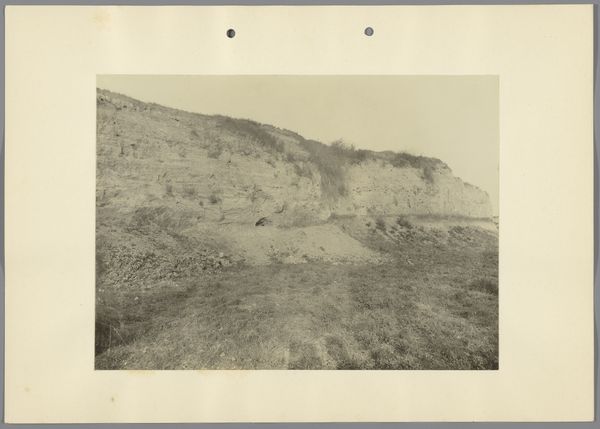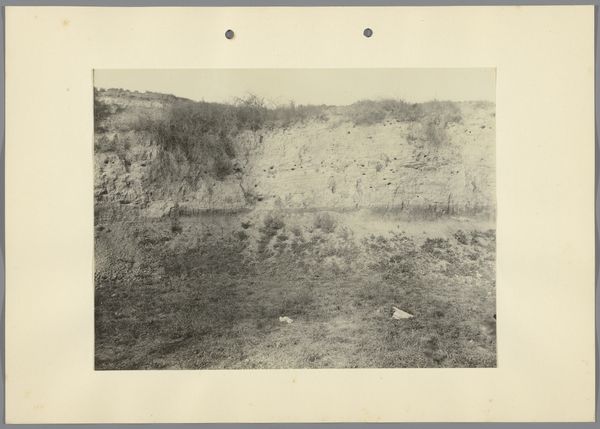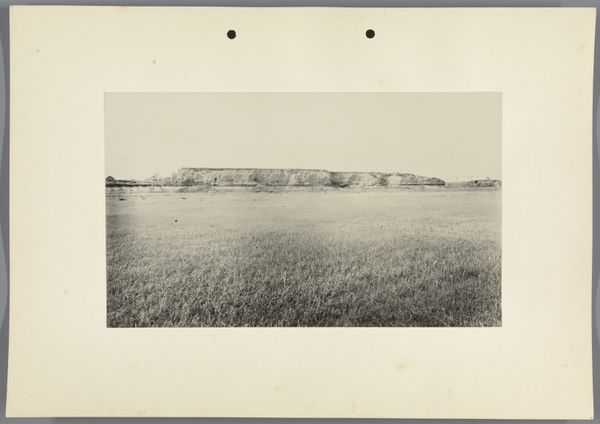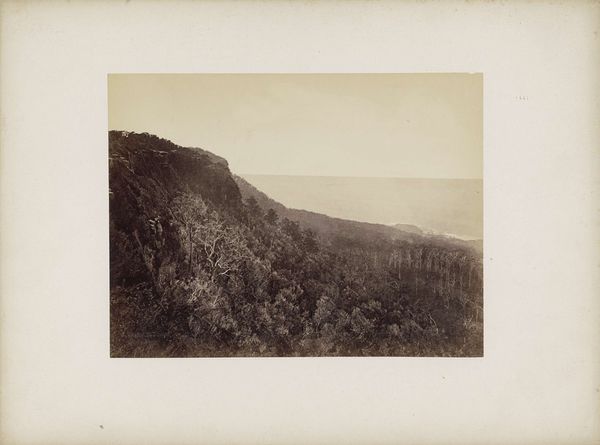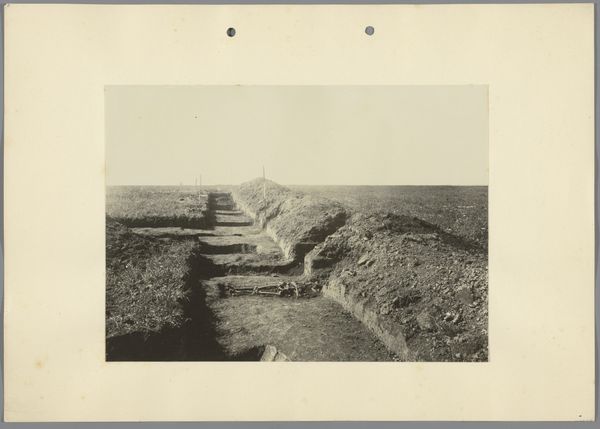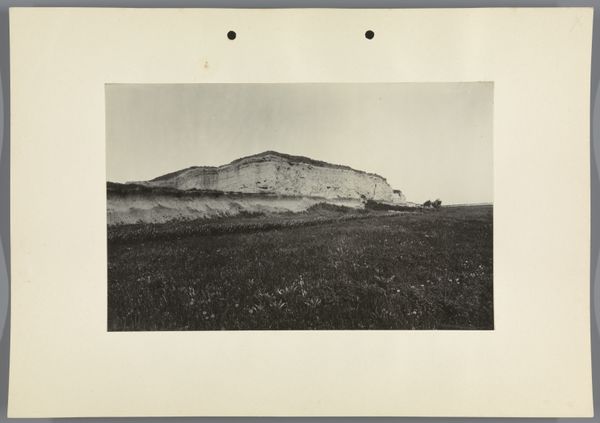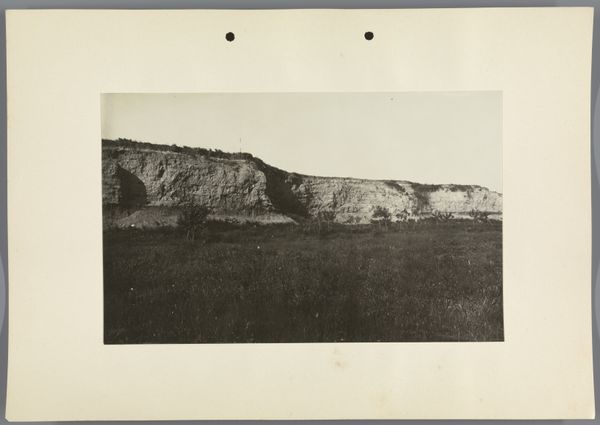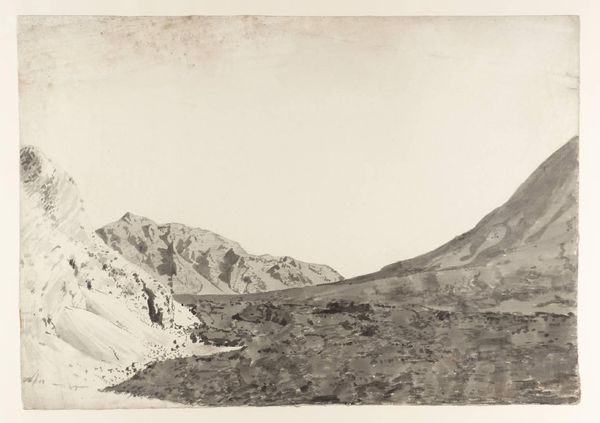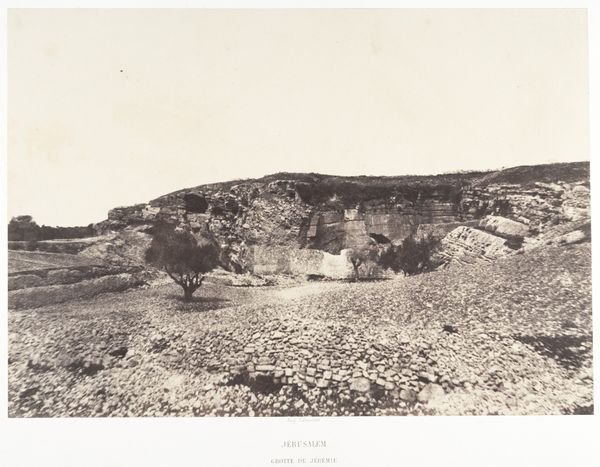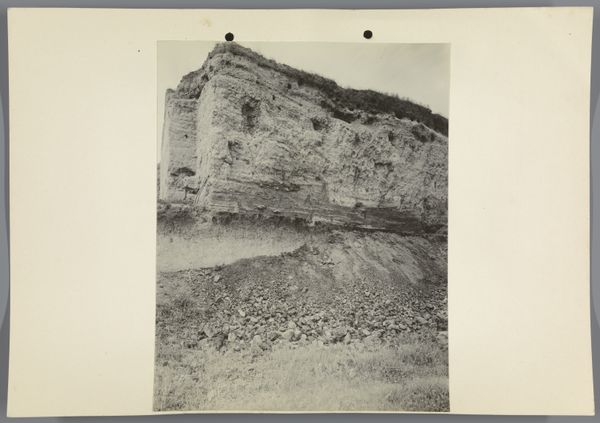
#
pencil drawn
#
pale palette
#
ink paper printed
#
personal sketchbook
#
watercolour bleed
#
watercolour illustration
#
tonal art
#
remaining negative space
#
sketchbook art
#
watercolor
Dimensions: height 215 mm, width 170 mm, height 239 mm, width 340 mm
Copyright: Rijks Museum: Open Domain
Curator: My first impression is of an old photograph bleached by time; the limited palette makes me feel rather nostalgic. Editor: Indeed. We're looking at "Zijaanzicht van een terp bij Tószeg," or "Side view of a mound near Tószeg" created in 1928 by Jan Lanting. What intrigues me most is the use of watercolor on paper. The process speaks volumes about landscape representation in art, connecting to traditions of plein air sketching and its place in both artistic training and documentation of specific places. Curator: You are absolutely right. Considering the location, one imagines Lanting confronting the actual mound directly, observing how the earth is formed. It’s fascinating to imagine the societal backdrop, considering that in 1928 the artist was closely following how ordinary labor can be a special element within our modern age. Editor: Absolutely. Tószeg has archaeological significance, known for Bronze Age settlements. One wonders if Lanting was aware of these findings. His depiction could be interpreted as a reflection on the weight of history embedded in the land. The mound thus becomes more than a mere landscape feature, more than the means of obtaining water to the settlement in the area. Curator: Good point, one might observe Lanting focusing on the texture of the paper itself. The visual weight seems divided between paper as material versus the mound as an archeological site and physical barrier; what kind of process, one could wonder, caused it to turn almost monochromatic? Editor: That is quite an observation; I'm now viewing this through the lens of institutional validation. Sketchbooks and watercolors were accepted differently from paintings—did it grant the artist some freedoms regarding subject and expression outside formal artistic expectations of his time? This image certainly tests that very limit by pushing against preconceived landscape representations and embracing the artistic vision that drove the age. Curator: Exactly, you bring up the real substance beneath. A dialogue about what’s real! Editor: Indeed, I now see it’s less about capturing a pretty scene and more about documenting a place charged with the weight of labor, history, and culture. Thank you for these stimulating questions!
Comments
No comments
Be the first to comment and join the conversation on the ultimate creative platform.
